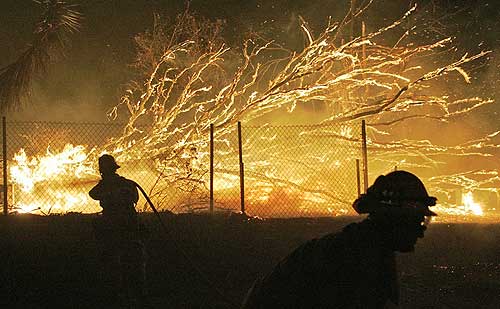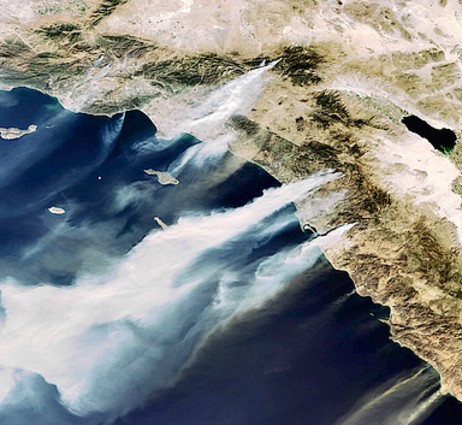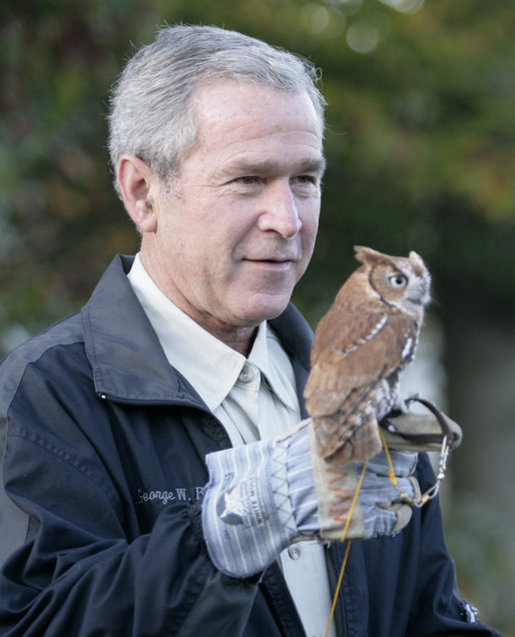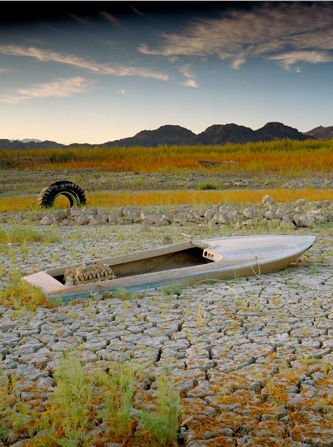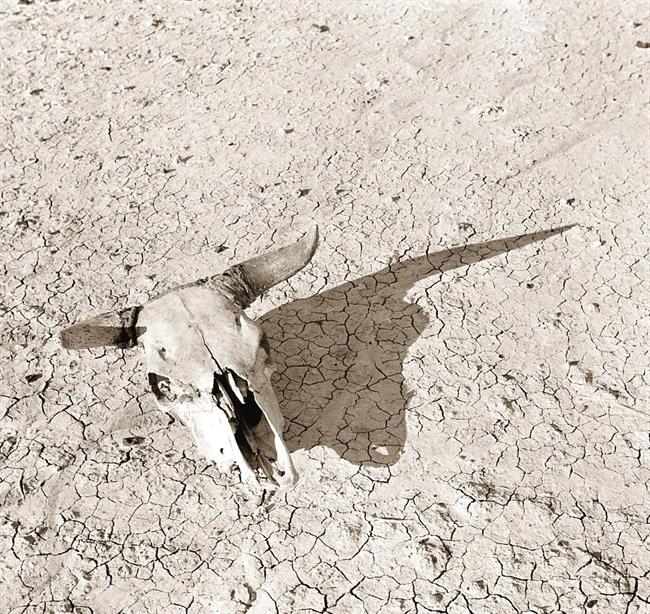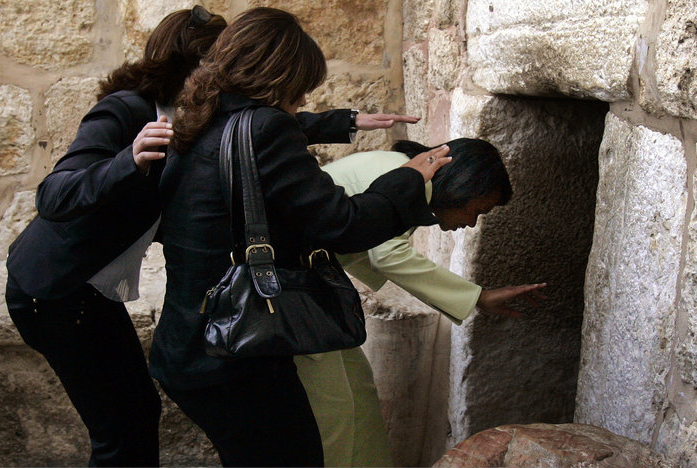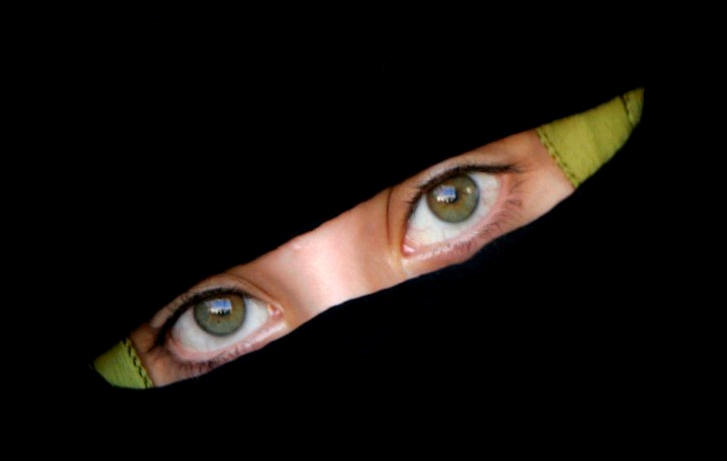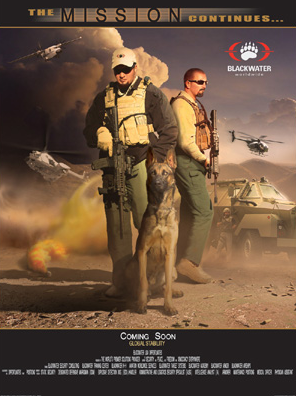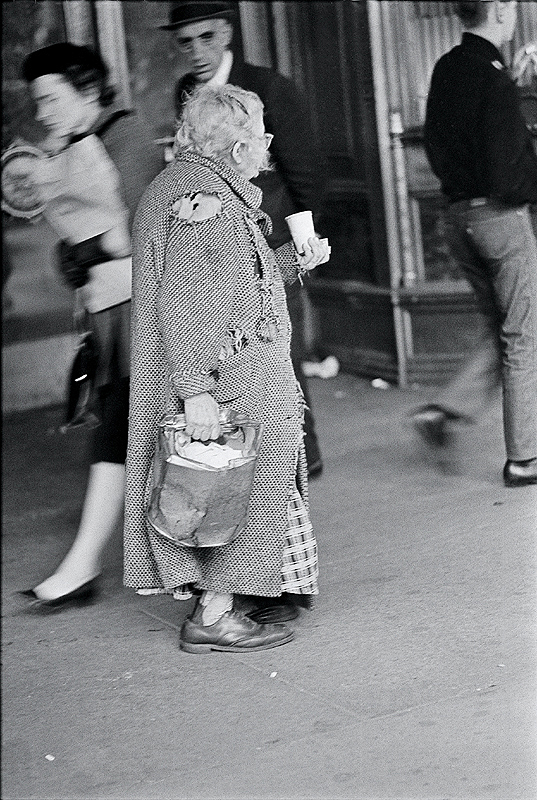As the California wildfires burned this week, online papers put up dozens of photographs to document the who, what, where, and when of the disaster. (They said less about why; can you guess what might be a factor?) Stock images soon emerged: firefighters standing amidst the blaze or sagging from exhaustion; homeowners fighting back with garden hoses or staring in numbed disbelief at the extent of their loss; buildings exploding into flames and charred cars lying aslant in the streets like ad hoc tombstones. Then there were a few that somehow caught sight of something deeper. This one, for example:
If nothing else, this image highlights one cause of the blaze: the wind that can make embers from a burning brand stream wildly across the open country. But the image is more elemental than that. We almost could be looking at a physics experiment. What is in fact fire also appears as electrical currents arcing outwards, crackling and flowing with the same chaotic necessity found in the atom or in the sun. The transmutation of nature’s surging energies is suggested by both the light of the full moon above, reflected from the sun, and the seething intensity of the little fire pits burning into the earth.
I had moved on from this image, thinking it merely unique, until I saw this:
Again, the wind whips the fire forward. Again, along the course of the firestream we can see nature’s underlying structure. The fire races through the tree the same way it arcs through the air. The bright tracery of limbs and branches reveals how water, wind, and fire flow. Nature’s order is but a snapshot of energy’s relentless surge and spread.
And so we get to this:
The caption said, “A picture released by the European Space Agency shows fierce desert winds blowing smoke from wildfires Monday in Southern California.” Another imaging technology, another view, but one with the same capacity for insight. The harsh energy of the fires now is seen as smoke being carried along by winds capable of circling the earth. The scene is at once gentler and yet all the more conclusive: natural processes are ever present, enveloping, and flaunted only at our peril.
And there is something else in this photo that might be a sign of hope: the blue, blue water. Now the tableau is complete. Hot, arid land, as if bleached by the fires on its surface, produces the white ash of the smoke, which flows across the cool waters that soothe the planet. There is irony, too, as the land burns with all that water nearby, but the conclusion should not be that we need bigger helicopters for water bombing the canyons.
I see a beautiful, beautiful planet. How sad it would be look back someday as we stare in numbed disbelief at the extent of our loss.
Photographs by Brian Vander Brug/Los Angeles Times, October 23, 2007; Lawrence K. Ho/Los Angeles Times, October 23, 2007; AFP/Getty Images, October 23, 2007.

